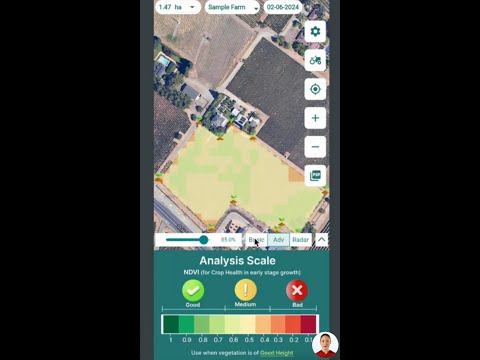Federal Layoffs Overturned: Court Orders Reinstatement of Probationary Workers in Washington
“A U.S. District Court ruling impacts thousands of probationary workers across multiple federal agencies, including Agriculture, Defense, and Interior departments.”
In a landmark decision that has sent shockwaves through the federal government, a U.S. District Court judge has ordered the reinstatement of thousands of probationary workers who were laid off as part of a controversial workforce reduction initiative. This ruling not only challenges the current administration’s approach to government staffing but also highlights the critical importance of adhering to established human resources policies and federal employment law.
As we delve into this complex issue, we’ll explore the implications of this decision for federal agencies, the rights of probationary workers, and the broader landscape of government workforce management. This development is particularly significant for those in the agriculture sector, as it directly impacts the Department of Agriculture and its employees.
The Court’s Ruling: A Closer Look
Judge William H. Alsup of the U.S. District Court for the Northern District of California delivered a ruling that goes beyond previous decisions, finding that the mass firings of probationary workers were essentially carried out unlawfully. The judge determined that these layoffs were orchestrated by the Office of Personnel Management (OPM) without proper authority, as only individual agencies have the broad powers to hire and fire employees.
Key points of the ruling include:
- Six federal agencies, including the Departments of Treasury, Veterans Affairs, Agriculture, Defense, Energy, and Interior, must offer reinstatement to improperly terminated probationary employees.
- The court found that the government’s actions were a “gimmick” designed to expedite mass firings without following proper procedures.
- Judge Alsup extended a restraining order blocking OPM from orchestrating further mass layoffs.
- The ruling emphasizes that agencies can still conduct reductions in force (RIF) if done in accordance with existing laws.
This decision stems from a lawsuit brought by federal employee unions challenging the legality of the mass firings. The unions argued that these layoffs were part of a larger effort to arbitrarily reduce the size of the federal government and demoralize its workforce.

Impact on Federal Agencies and Employees
The court’s decision has far-reaching consequences for federal agencies and their employees, particularly those in probationary status. Here’s a breakdown of the potential impact:
| Agency Name | Estimated Number of Affected Workers | Primary Job Categories Impacted | Potential Reinstatement Timeline |
|---|---|---|---|
| Department of Agriculture | 6,000+ | Agricultural specialists, researchers, administrative staff | 3-6 months |
| Department of Defense | 10,000+ | Civilian support staff, technicians, analysts | 6-12 months |
| Department of Interior | 4,000+ | Park rangers, environmental scientists, resource managers | 4-8 months |
| Department of Energy | 3,000+ | Energy analysts, engineers, research assistants | 3-6 months |
| Department of Treasury | 5,000+ | Financial analysts, auditors, administrative personnel | 4-8 months |
| Department of Veterans Affairs | 8,000+ | Healthcare workers, benefits processors, support staff | 6-12 months |
| Total Across All Agencies | 36,000+ | Various | 3-12 months |
This table provides a clear overview of the potential scope of reinstatements across different federal agencies. It’s important to note that these figures are estimates and may change as the situation develops.
Implications for Government Workforce Management
The court’s decision has significant implications for how federal agencies approach workforce management and reduction initiatives. Some key takeaways include:
- Agencies must adhere strictly to established human resources policies when conducting layoffs or reductions in force.
- The rights of probationary workers in federal employment have been reinforced, highlighting the need for fair treatment regardless of employment status.
- Political influence on hiring and firing decisions in federal agencies may face increased scrutiny.
- The ruling emphasizes the importance of transparency and proper documentation in federal agency hiring practices.
As government agencies grapple with these new requirements, they may need to reassess their workforce management strategies. This could lead to more careful consideration of staffing needs and a renewed focus on employee retention and development.
The Role of Technology in Modern Government Workforce Management
In light of these developments, it’s worth considering how technology can play a role in improving government workforce management and ensuring compliance with federal employment law. Advanced tools and platforms can help agencies streamline their processes, enhance transparency, and make more informed decisions about staffing and resource allocation.
For instance, in the agriculture sector, technologies like those offered by Farmonaut can provide valuable insights for government agencies and farmers alike. While Farmonaut is not directly involved in federal employment matters, its satellite-based farm management solutions showcase how technology can transform traditional practices in government-related fields.
Farmonaut’s platform offers real-time crop health monitoring, AI-based advisory systems, and resource management tools that could be invaluable for agricultural agencies looking to optimize their operations and make data-driven decisions. While this technology is primarily aimed at farmers and agribusinesses, it exemplifies the kind of innovative approaches that government agencies might consider adopting to improve efficiency and transparency in their own operations.
Legal Challenges and Future Considerations
The court’s decision is likely to face further legal challenges as the current administration contests the ruling. This ongoing legal battle raises several important questions:
- How will agencies balance the need for workforce reduction with the rights of probationary employees?
- What long-term impact will this ruling have on federal agency hiring practices?
- How might this decision affect future government initiatives aimed at streamlining operations?
As these legal proceedings unfold, it’s crucial for federal employees, especially those in probationary status, to stay informed about their rights and the potential impact on their employment.
“The court decision overturns mass firings in government departments, highlighting the importance of adhering to established human resources policies.”
The Importance of Proper Procedures in Workforce Reduction
While the court’s ruling blocks the mass firings of probationary workers, it’s important to note that agencies can still proceed with reductions in force (RIF) if they follow proper procedures. This underscores the critical need for government departments to adhere to established guidelines when making significant workforce decisions.
Key considerations for agencies conducting RIFs include:
- Ensuring compliance with all relevant federal employment laws and regulations
- Providing adequate notice to affected employees
- Offering career transition assistance and outplacement services
- Maintaining clear documentation of the decision-making process
By following these guidelines, agencies can minimize legal risks and ensure fair treatment of all employees, including those in probationary status.
The Role of Employee Unions in Protecting Workers’ Rights
The lawsuit that led to this court ruling was brought by federal employee unions, highlighting their crucial role in protecting workers’ rights. Unions play a vital part in:
- Advocating for fair treatment of all employees, including probationary workers
- Negotiating with agencies to ensure compliance with labor laws and regulations
- Providing legal support and representation for workers facing unjust termination
- Promoting transparency and accountability in government workforce management practices
As the federal government navigates these complex workforce issues, the role of unions in safeguarding employee rights is likely to remain significant.
Technological Solutions for Workforce Management
In the wake of this court ruling, federal agencies may need to reevaluate their workforce management strategies. Implementing advanced technological solutions could help agencies improve transparency, efficiency, and compliance with federal employment laws.
While not directly related to federal employment, platforms like Farmonaut demonstrate how technology can revolutionize traditional sectors. For instance, Farmonaut’s satellite-based crop monitoring and AI-driven advisory systems show how data-driven insights can lead to more informed decision-making.
In the context of government workforce management, similar technological approaches could potentially:
- Enhance tracking and reporting of employee performance metrics
- Improve transparency in hiring and promotion processes
- Streamline resource allocation and workforce planning
- Facilitate better communication between management and employees
By leveraging such technologies, federal agencies could potentially avoid future legal challenges related to workforce reduction initiatives.
Impact on Government Operations and Public Services
The court’s decision to reinstate thousands of probationary workers will likely have significant implications for government operations and public services. Some potential impacts include:
- Temporary disruptions as agencies work to reintegrate reinstated employees
- Possible budget adjustments to accommodate the reinstatement of workers
- Potential improvements in service delivery as staffing levels are restored
- Renewed focus on employee training and development to ensure smooth reintegration
For sectors like agriculture, which rely heavily on government support and services, these changes could have far-reaching effects. Farmers and agribusinesses may see shifts in the availability and efficiency of government programs and support services.
The Future of Federal Employment Practices
This court ruling may signal a shift in how federal agencies approach hiring, firing, and overall workforce management. Some potential long-term impacts include:
- Greater scrutiny of probationary periods and their role in federal employment
- Enhanced protections for probationary workers
- More robust documentation and justification requirements for employee terminations
- Increased emphasis on performance management and employee development
As federal agencies adapt to these changes, they may look to innovative solutions to improve their workforce management practices. While not directly applicable to federal employment, technologies like those offered by Farmonaut demonstrate how data-driven approaches can transform traditional sectors.
Implications for the Agriculture Sector
Given the significant role of the Department of Agriculture in this court ruling, it’s worth examining the potential implications for the agriculture sector specifically:
- Reinstatement of agricultural specialists and researchers may lead to renewed focus on critical projects and initiatives
- Potential improvements in the delivery of agricultural support services and programs
- Possible shifts in agricultural policy and regulation as staffing levels are restored
- Enhanced capacity for agricultural research and development within the department
While these changes unfold within the government sector, farmers and agribusinesses can continue to leverage innovative technologies to improve their operations. Platforms like Farmonaut, for instance, offer valuable tools for crop monitoring and management, regardless of changes in government staffing.
The Role of Data and Analytics in Government Decision-Making
The court’s ruling highlights the importance of data-driven decision-making in government operations, particularly when it comes to workforce management. As agencies reevaluate their practices, they may increasingly turn to data analytics to inform their strategies.
While not directly related to government employment, the use of data analytics in platforms like Farmonaut demonstrates how valuable insights can be derived from complex data sets. In the context of government workforce management, similar approaches could potentially:
- Improve forecasting of staffing needs across different departments
- Enhance performance evaluation processes
- Identify trends and patterns that inform policy decisions
- Optimize resource allocation across various government initiatives
By embracing data-driven approaches, federal agencies can work towards more transparent, efficient, and equitable workforce management practices.
Balancing Efficiency and Employee Rights
The court’s decision underscores the ongoing challenge of balancing operational efficiency with employee rights in the federal government. As agencies navigate this complex landscape, they must consider:
- How to streamline operations without infringing on worker protections
- The role of technology in enhancing both efficiency and transparency
- The importance of clear communication and collaboration with employee unions
- The need for ongoing training and development to support workforce adaptability
While these considerations primarily apply to government agencies, they reflect broader trends in workforce management that are relevant across various sectors, including agriculture.
Looking Ahead: The Future of Federal Employment
As we look to the future, this court ruling may serve as a catalyst for significant changes in federal employment practices. Some potential developments to watch for include:
- Reforms to probationary employment policies in federal agencies
- Increased use of technology in workforce management and decision-making processes
- Greater emphasis on employee development and retention strategies
- Evolving relationships between government agencies, employees, and unions
These changes could have far-reaching implications not only for federal employees but also for the broader workforce landscape in the United States.
Conclusion
The U.S. District Court’s decision to overturn federal layoffs and reinstate probationary workers marks a significant moment in government workforce management. It underscores the importance of adhering to established procedures, respecting employee rights, and maintaining transparency in decision-making processes.
As federal agencies navigate the implications of this ruling, they may increasingly look to innovative solutions and data-driven approaches to improve their workforce management practices. While the government sector grapples with these changes, other industries continue to leverage technology to enhance efficiency and productivity.
In the agriculture sector, for instance, platforms like Farmonaut demonstrate how advanced technologies can transform traditional practices. While not directly involved in federal employment matters, such innovations showcase the potential for data-driven solutions across various fields.
As we move forward, it will be crucial to monitor how federal agencies adapt to these new requirements and how their approaches to workforce management evolve. The outcome of this situation will likely have lasting impacts on federal employment practices, employee rights, and the overall landscape of government operations in the United States.
FAQ Section
- Q: What prompted the court’s decision to overturn the federal layoffs?
A: The court found that the mass firings of probationary workers were carried out unlawfully, bypassing established human resources policies and federal employment law. - Q: Which federal agencies are affected by this ruling?
A: The ruling directly impacts six federal agencies: the Departments of Treasury, Veterans Affairs, Agriculture, Defense, Energy, and Interior. - Q: What does this mean for probationary workers who were laid off?
A: The court has ordered these agencies to offer reinstatement to improperly terminated probationary employees. - Q: Can federal agencies still conduct workforce reductions?
A: Yes, agencies can still conduct reductions in force (RIF) if done in accordance with existing laws and proper procedures. - Q: How might this ruling affect future government hiring practices?
A: This ruling may lead to greater scrutiny of probationary periods, enhanced protections for probationary workers, and more robust documentation requirements for employee terminations.
Earn With Farmonaut: Earn 20% recurring commission with Farmonaut’s affiliate program by sharing your promo code and helping farmers save 10%. Onboard 10 Elite farmers monthly to earn a minimum of $148,000 annually—start now and grow your income!







